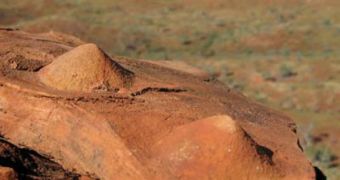According to a new scientific study, the layered, rock-like structures called stromatolites that can be found in shallow waters, were created by microbial colonies more than 3.45 billion years ago. The investigation revealed that the dark bands of organic layers that could be found in the rocky structures were, in fact, made up of fossilized microbe colonies, hardened with the passing of geological time. The microorganisms were found in stromatolites located in the Strelley Pool formation in Western Australia.
Investigators from the California Institute of Technology (Caltech) and the NASA-operated Jet Propulsion Laboratory (JPL) say that the new find, combined with existing data, hints that the microbes began to build their colonies – and the stromatolites, implicitly – less than a billion years after the planet formed, more than 4.5 billion years ago. Geologists and other scientists have been arguing about how stromatolites formed for years, and this study is the first to clearly establish an organic origin.
“This is the first evidence that will help reach consensus and convince the community. This is the most convincing evidence to come out to date,” JPL geobiologist Abigail Allwood explains. The expert has also been the lead author of a new study accompanying the find, published in a previous issue of the respected journal Proceedings of the National Academy of Sciences (PNAS). Additionally, Allwood tells LiveScience, the presence, nature and orientation of the organic material seem to point directly at microbial mats as a source of these stromatolites.
The issue for debate will now most likely move from the source of the stromatolites to how they were actually built, and over what periods of time. While some believe it takes millions of years for layers to form, others argue that each layer is created annually. The Australian location will remain a source of precise readings, because even the oldest layers are not broken up, as they are in other places.

 14 DAY TRIAL //
14 DAY TRIAL //